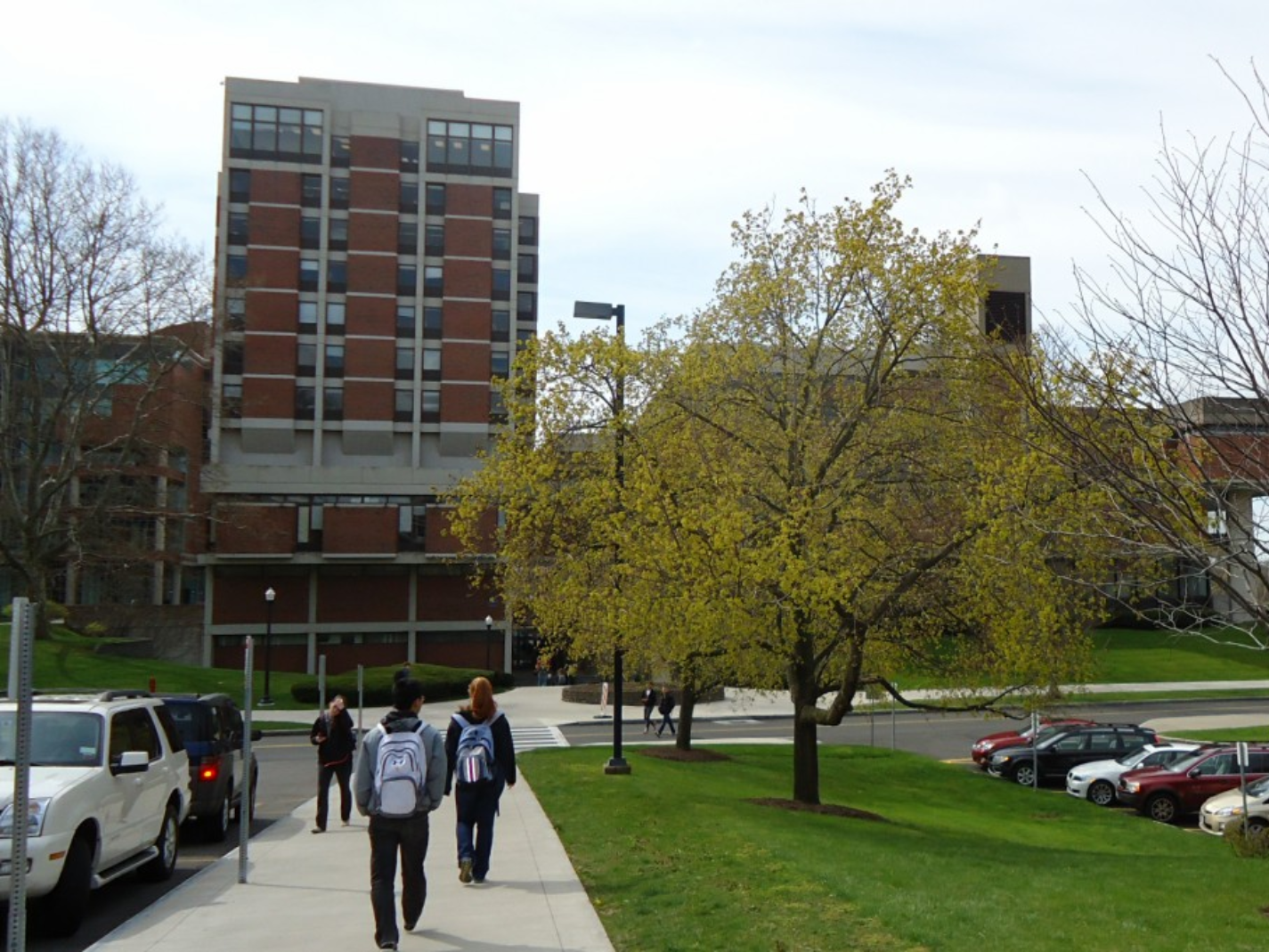
Research misconduct. It is defined by the National Institutes of Health (NIH) as “fabricating, falsifying, and/or plagiarizing in proposing, performing, or reviewing research, or in reporting research results.”[1] It is deplorable and shameful behavior, grounds for serious disciplinary action. And it is alarmingly on the rise in the science world.
In mid-September, science journalism was marked by surfacing reports of a significant research misconduct scandal involving leading neuroscientist and NIH official Eliezer Masliah. The NIH released a statement regarding Masliah’s misconduct on September 26, 2024, and the issue was covered by Science and Nature as well as by Minding the Campus and others. According to reports, Masliah was found to have falsified information in articles that supported the development of and clinical trials for prasinezumab as a potential treatment for Parkinson’s disease.[2]
[RELATED: Eliezer Masliah’s Misconduct Exposes a Crisis in Scientific Integrity]
Now, two months later, new details surrounding a previous high-profile research misconduct case are surfacing. According to a November 8 report from the Wall Street Journal, University of Rochester physicist Ranga Dias, having been accused of data manipulation and plagiarism in four publications and a National Science Foundation (NSF) grant proposal, has just been recommended for dismissal from the university.[3]
Ranga Dias was born in Sri Lanka and received his bachelor’s degree from the University of Colombo, according to his biography on the University of Rochester website.[4] Subsequently, he obtained a Ph.D. in physics from Washington State University and completed his postdoctoral research fellowship at Harvard University. Focusing his research on high-temperature physics and quantum phenomena in hydrogens, Dias soon began releasing journal articles claiming an incredible feat: he had discovered a room-temperature superconductor.
His research scandal narrative dates back to September 2022, when his 2020 Nature article entitled “Room-temperature Superconductivity in a Carbonaceous Sulfur Hydride” was retracted after the issuing of the following statement seven months earlier:
15 February 2022 Editor’s Note: The editors of Nature have been alerted to concerns regarding the manner in which the data in this paper have been processed and interpreted. Nature is working with the authors to investigate these concerns and establish what (if any) impact they will have on the paper’s results and conclusions. In the meantime, readers are advised to use caution when using results reported therein.[5]
Following this, Dias had a total of four more articles retracted, as reported by Retraction Watch, with the most recent being a 2021 article in the journal Physical Review Letters.[6] These retractions were based on allegations of either plagiarized material or fabricated data.
Cheating behaviors are evidently not new for Dias.
According to Science, in addition to the five retracted papers and accusations of data manipulation and plagiarism in his publications, including research funded by the NSF, Dias has also been accused of plagiarizing at least a quarter of the information in his 2013 Ph.D. thesis at Washington State University.[7] Primarily, it was noted that a chunk of information was copied from the 2007 thesis of James Hamlin, who is a professor and researcher at the University of Florida. Dias’ thesis was said to include identical paragraphs and uncited, copied text from Hamlin’s thesis and numerous other papers.
[RELATED: Science Needs a Check-Up. Bureaucracy is Failing the Integrity Test.]
Although Dias was no longer able to work with students or perform experiments in the laboratories at the University of Rochester back in 2023, moves to dismiss him from the school completely had been pending until the November 8 report.
Scientists who choose to engage in research misconduct paint scientific practice in a dismal light. Such dishonorable behavior slowly degrades the integrity and trustworthiness of scientific experts, making it no small wonder that the Pew Research Center reports the rapidly decreasing trust in science among the American public.[8] Based on the recent reports, it is clear that ethics and morality must be restored to the scientific world before it dives deeper into crisis.
Explore more from Hannah Hutchins on Muck Rack, and visit our Minding the Science column for in-depth analysis on topics ranging from wokeism in STEM, scientific ethics, and research funding to climate science, scientific organizations, and much more.
[1] “What is Research Misconduct,” National Institutes of Health, https://grants.nih.gov/policy-and-compliance/policy-topics/research-misconduct/what-is-research-misconduct
[2] Charles Piller, “Picture Imperfect,” Science, https://www.science.org/content/article/research-misconduct-finding-neuroscientist-eliezer-masliah-papers-under-suspicion?utm_source=sfmc&utm_medium=email&utm_content=alert&utm_campaign=DailyLatestNews&et_rid=17098977&et_cid=5371851
[3] Nidhi Subbaraman, “University Boss Calls for the Firing of Embattled Superconductivity Scientist,” The Wall Street Journal. https://www.wsj.com/science/university-rochester-ranga-dias-superconductor-misconduct-aa2f9fd4
[4] “Ranga Dias,” University of Rochester Department of Mechanical Engineering, https://www.hajim.rochester.edu/me/people/faculty/dias-ranga/index.html
[5] Ranga Dias et al., “Retracted Article: Room-temperature Superconductivity in a Carbonaceous Sulfur Hydride,” Nature, https://www.nature.com/articles/s41586-020-2801-z
[6] Ellie Kincaid, “Superconductor Researcher Loses Fifth Paper,” Retraction Watch, https://retractionwatch.com/2024/06/21/superconductor-researcher-loses-fifth-paper/
[7] Danial Garisto. “Plagiarism allegations pursue physicist behind stunning superconductivity claims,” Science, https://www.science.org/content/article/plagiarism-allegations-pursue-physicist-behind-stunning-superconductivity-claims
[8] Brian Kennedy, “Americans’ Trust in Scientists, Positive Views of Science Continue to Decline,” Pew Research Center, https://www.pewresearch.org/science/2023/11/14/americans-trust-in-scientists-positive-views-of-science-continue-to-decline/
Image of Science building at the University of Rochester by Tomwsulcer on Wikimedia Commons

My husband Parkinson’s disease symptoms has greatly subsided since using the PD-5 protocol, almost all his symptoms has subsided 4 months into using the PD-5 protocol. Google bine healthcenter . c om don’t give up hope.
What fraction of superconductivity research is fraudulent? One paper out of a thousand? Perhaps an order of magnitude less or more? I would think that shames most endeavours.
And, the article states “it is clear that ethics and morality must be restored to the scientific world before it dives deeper into crisis.” But the scientific world has acted quickly to expose and punish high temperature superconducvitity fraus. What else would be done apart from scientists living lives of complete virtuousness?
I argue that all superconductivity should be considered fraudulent until known not to be — that all thousand papers need to be suspect until proven otherwise.
The problem is twofold — it’s not just that the existing fraud makes one suspect more but that as research is built upon the research of others, you don’t know what research has been built upon this fraudulent research.
It’s not just the defective concrete in the basement but the 30 story building that is being held up by this defective concrete. And even if the 30 story building itself was built perfectly right, it’s engineers designed it on the concrete in the basement having a certain strength and if it doesn’t, the whole building is going to fall over…
“What else would be done apart from scientists living lives of complete virtuousness?”
That’s like saying what can be done about embezzlement other than bankers not embezzling, and my response is “don’t we already have such an expectation?”
Let me go further on that — when we catch bankers embezzling, they don’t just get fired. No, they get fined and incarcerated, a very public example is made of them so as to discourage others from doing likewise.
When has a scientist ever gone to jail for research fraud? If Rudy Giuliani can be bankrupted for what he said about two election poll workers, then why aren’t these scientists being bankrupted for their fraud? There’s Federal Money involved here, indirectly through grants if not directly — Eliezer Masliah is identified as a “NIH official” and I presume the NIH is paying him for that.
This isn’t like the one-off of “Cold Fusion” that we had 30 years ago — something that was immediately rejected when others couldn’t duplicate the research — research that could have been legitimately sloppy as people pointed out the errors that they believed the initial researcher made. Nor is it something like the Sokal Hoax where a physicist cobbled together something truly meaningless just to prove that yes, they really would print *anything* that had enough of the politically correct buzzwords in it — and then told everyone what he had done and why.
No, this is fraud for personal gain and glory, and if Donald Trump can be convicted of “crimes” that I can neither articulate nor comprehend, these folks need to be convicted of something. Federal money, intended to be used to conduct legitimate research, was instead used for fraud. Mens rea comes to mind here — do these people know how research is supposed to be done (yes) and did they do it that way (no). That’s your fraud.
Put a couple dozen scientists into Federal prison and the rest will be motivated to live a virtuous life….
I remember there was a time where people could speak at length and cogently on a topic without having to always bring in politics.
Gen Z has a meme for the rant you just went on “Sir, this is a Wendy’s.l
And I am the State Health Inspector…
“Research misconduct. It is defined by the National Institutes of Health (NIH) as “fabricating, falsifying, and/or plagiarizing in proposing, performing, or reviewing research, or in reporting research results.””
I would argue that it also includes ethical issues regarding how research is conducted and protection of human subjects in research. Yes, “fabricating, falsifying, and/or plagiarizing” are serious issues, but it includes other things like the infamous Stanford Prison experiment and Milgram’s equally infamous electric shock experiment.
OK Hannah, you need to follow up on this — how much of MIT’s reported breakthroughs on room temperature superconductors are also hoaxes. See: https://news.mit.edu/2024/tests-show-high-temperature-superconducting-magnets-fusion-ready-0304
Yes, they are using magnetic fields to contain hydrogen fusing into helium, but the same superconductors could (theoretically) be used in electric motors to create the magnetic fields that spin the motor, and possibly for transmission of electricity over distance.
Without getting too far into the weeds, the high tension power lines are somewhere between 345,000 and 800,000 volts. The substation’s transformers drop this down to 13,600 volts (8,700 to ground) for the wires that run along the street, and pole mounted transformers then drop that down to the 240 volts (120 to ground) that we use in our homes and offices.
Even with the higher voltages, a significant amount of electricity is lost and 240 volts would not go that far anyway. Superconducting transmission lines would both eliminate the need for dangerous high voltage lines *and* reduce or virtually eliminate transmission loss. Likewise, superconductors in the winding of electric motors would both eliminate much of the electricity lost to resistance *and* the heat that is generated by it.
So is MIT’s purported superconductor breakthroughs also hoaxes, or do they actually have something?
That’s the real problem with research fraud, once you start cooking the books, you never know whose books are actually honest data worthy of trust.